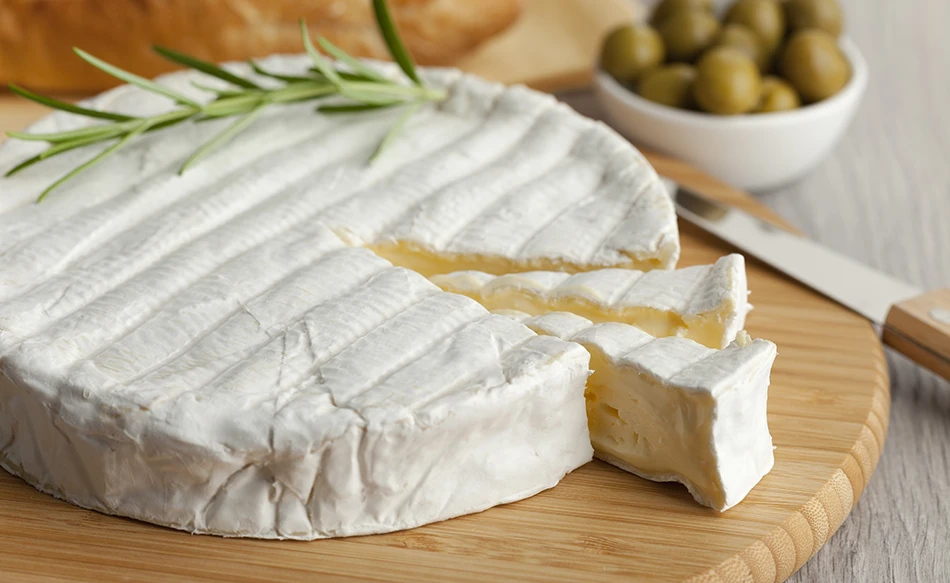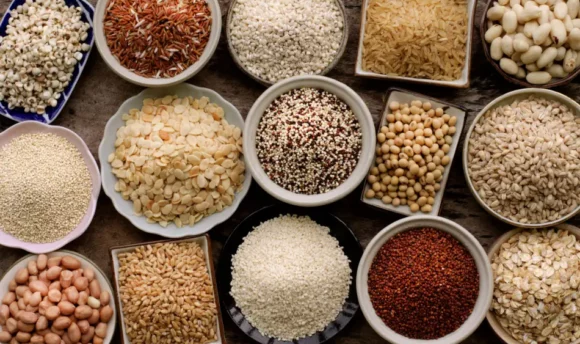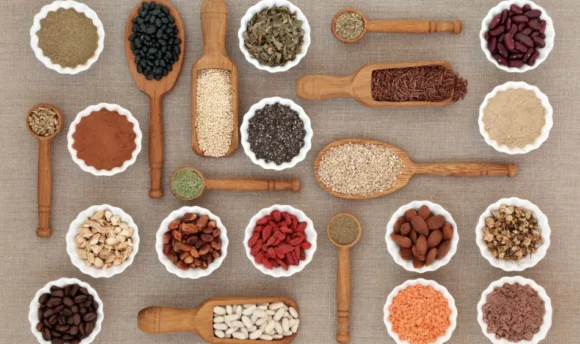Is Brie Cheese Healthy? Nutritional Profile and Benefits
Brie cheese is undoubtedly tasty, but is it good for your health?

Are you a cheese lover searching for a tasty yet nutritious option? Brie might be a great choice. This velvety French delicacy has more to offer than just its indulgent flavor.
From its smooth texture to its rich buttery taste, this kind of cheese is a treat for the senses. But is it healthy?
Join us as we delve into the nutritional value of brie cheese and unravel the reasons why it deserves a spot on your plate. Explore a creative recipe idea and expert tips and learn how to incorporate this cheese into your daily meals.
Is Brie Cheese Healthy?
Yes, it can be a healthy option if it’s consumed in moderation.
Brie cheese brings both flavor and nutritional value to the table. This cheese contains high levels of protein and essential nutrients such as calcium, phosphorus, vitamin B12, and vitamin K2. However, brie is also high in saturated fat and sodium.
In contrast to some other cheese types, this cheese is relatively high in calories. In order to avoid excessive calorie consumption, it is important to consume brie in appropriate portions.
What Is Brie Cheese?
Brie is a soft and creamy French cheese made from cow’s milk. It has a mild, buttery flavor and an edible white rind.
To make this cheese, rennet (a coagulating enzyme) is added to fresh cows’ milk, causing it to curdle. Curds are then cut, drained, and molded into rounds. To develop its unique flavors and textures, the cheese is then aged for several weeks.
There are many ways to serve brie, from spreading it on bread to melting it into dishes and serving it with fruit and wine.
Brie Cheese Nutrition

How many calories are in brie cheese?
Brie typically contains around 334 calories per 100 grams. When incorporating brie cheese into a healthy diet, it’s important to consider portion sizes and balance it with other nutrient-dense foods like whole grains, fruits, and vegetables.
Benefits of Brie Cheese
A creamy, flavorful French cheese, brie offers more than its delicious taste. From essential nutrients to potential wellness boosts, this cheese has a wealth of health benefits.
Here are a few reasons why brie is a valuable addition to a balanced diet and culinary experience:
#1 Nutrient-dense
There is a wide range of essential nutrients found in brie cheese, making it a nutrient-dense food. This product contains protein, calcium, phosphorus, and vitamin B12. The nutrients in these foods support bone health, muscle function, and the production of red blood cells.
While brie cheese does contain fat, it includes some healthy fats like monounsaturated and polyunsaturated fats.
#2 Probiotic potential
This cheese possesses a unique microbial composition. During the aging of brie cheese, specific strains of lactic acid bacteria (LAB) naturally occur and thrive. These LAB strains have the potential to exert probiotic effects beneficial for healthy gut flora.
Probiotics are live microorganisms that confer health benefits when consumed in adequate amounts. They promote healthy gut microbiota by restoring and balancing the beneficial bacteria in the digestive system.
#3 Versatile and delicious
Brie cheese is a cow’s milk cheese known for its versatility that pairs well with both sweet and savory flavors, making it a popular choice in various culinary applications.
Its soft and creamy texture is perfect for spreading on crackers or bread. When heated, it melts beautifully, adding a luxurious touch to grilled sandwiches and pizzas.
Downsides of Brie Cheese
Despite brie cheese’s delicious taste and potential benefits, it is important to know about its potential downsides as well.
A thorough understanding of the possible drawbacks of consuming brie cheese can help you make informed dietary choices.
#1 High in calories and fat
Two notable considerations are its high saturated fat and calorie content.
Brie cheese is known for its rich, creamy texture, which is attributed to its high fat content. While some fats are essential for the body, consuming excessive amounts of saturated fats, which are also found in this cheese, can contribute to an increased risk of cardiovascular diseases if consumed in large quantities.
Also, the caloric density in brie cheese can pose challenges for individuals aiming to manage or reduce their calorie intake. Overindulging in brie cheese without considering portion sizes can contribute to weight gain and hinder weight management goals.
#2 Contains lactose
As a dairy product, brie cheese naturally contains lactose, a sugar found in milk. Brie cheese might upset the stomach, particularly for those who are sensitive or intolerant to lactose or have specific digestive conditions. This may lead to discomfort and digestive issues like bloating, gas, and diarrhea.
However, it’s worth noting that the lactose content of brie cheese is generally lower compared to other dairy products. The aging process of brie cheese allows some lactose to be broken down by naturally occurring bacteria.
#3 High sodium content
Brie, like many other cheeses, can have a relatively high sodium content. Excessive sodium intake can contribute to various health concerns, including high blood pressure, heart disease, and kidney issues. The sodium levels in brie cheese can vary depending on the brand and production process, so always check the label before buying.
Delicious and Healthy Recipe With Brie Cheese
This quinoa bowl with roasted vegetables and brie cheese is the perfect combination of flavors. The nutty goodness of quinoa is combined with the vibrant flavors of roasted vegetables and the creamy delight of brie cheese in this mouthwatering recipe.
This dish is filled with nutrients and bursting with taste, making it an ideal meal for nourishing and satisfying your body. Enjoy every bite of this easy-to-make yet impressive quinoa bowl and elevate your dining experience.
Roasted Vegetable and Brie Cheese Quinoa Bowl
Ingredients:
- 1 cup cooked quinoa
- 1 cup mixed roasted vegetables (such as bell peppers, eggplant, zucchini, and cherry tomatoes)
- 2–3 slices of brie cheese
- Handful of baby spinach or arugula
- 2 tbsp balsamic glaze (optional)
- Fresh basil leaves (for garnish)
- Salt and pepper, to taste
Instructions:
- Line a baking sheet with parchment paper and preheat your oven to 400°F (200°C).
- Mix the mixed vegetables with olive oil, salt, and pepper. On the prepared baking sheet, spread the vegetables evenly and roast for 15–20 minutes until tender and slightly charred.
- In a serving bowl, add the cooked quinoa as the base.
- Add the roasted vegetables to the quinoa.
- Brie cheese slices should be layered over the warm vegetables so that they melt slightly.
- To add freshness, sprinkle a handful of baby spinach or arugula on top.
- For added flavor and sweetness, drizzle the balsamic glaze over the bowl (optional).
- Garnish with fresh basil leaves.
- Add salt and pepper to taste.
- Enjoy this tasty quinoa bowl topped with brie cheese right away and enjoy the delightful combination of flavors and textures.
A balanced mix of whole grains, roasted vegetables, and brie cheese makes this dish delicious. This dish is packed with nutrients, offers a variety of textures, and is sure to satisfy your taste buds.
You can customize the recipe by adding your favorite herbs or vegetables to make it even more unique.
FAQs
The rind on brie cheese is a thin outer layer that forms during the aging process and is safe to eat and can be easily digested by most people.
Brie is a soft cheese traditionally made from cow’s milk, although it is also possible to find variations made from sheep’s or goat’s milk. The primary ingredient in brie cheese is fresh, whole milk.
Brie cheese has less than 1 gram of carbohydrates per 100 grams. The carbohydrate content in brie is minimal compared to other food groups, making it a suitable option for those following low-carbohydrate or ketogenic diets.
This cheese might cause weight gain. There is a considerable amount of fat in brie cheese, including saturated fat. Weight gain can be caused by excessive consumption of high-calorie foods or inclusion in a high-calorie diet.
The appropriate amount of brie cheese to consume depends on individual factors such as dietary needs and health goals. For a healthy person, a recommended portion of brie is typically around 1–2 ounces (28–56 grams).
A Word From a Nutritionist
By being mindful of portions, choosing wholesome pairings, and using brie as part of a balanced diet, you can enjoy its exquisite flavors while prioritizing your health and well-being.
Eat brie cheese combined with nutrient-rich foods to create a balanced snack or meal. Pair it with fresh fruits, such as slices of crisp apple or juicy grapes, to add vitamins and fiber. Incorporate whole-grain crackers or bread for added texture and dietary fiber.
Choose cottage cheese or Quark cheese as a healthier alternative to soft cheeses. They have fewer calories, a good amount of protein, and offer versatility in various sweet and savory dishes.
When using brie in recipes, practice moderation. Incorporate it as a flavor-enhancing ingredient rather than the primary component to control calorie and fat content. Use it sparingly as baked brie or melt it onto whole grain toast for a delightful treat.
Conclusion
Brie cheese is healthy if consumed in moderation and as a part of a healthy diet.
If you like to eat brie raw or melted, enjoying it in moderation is important. While it offers creamy deliciousness, be mindful of portion sizes to keep your calorie and saturated fat intake in check.
To make it a healthier choice, pair it with nutritious partners. Fresh fruits and whole grains can add fiber, vitamins, and minerals to your snack or meal, compensating for brie cheese’s lack of fiber.
Using it as a flavor enhancer rather than the main ingredient can help control calorie and fat content.

















































 Select your language:
Select your language: 








